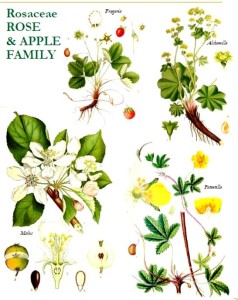Dr M is always on the look our for useful resources for teaching an learning plant ID and recently he discovered (belatedly, for it has been around since 2009!) an illustrated manual by Lena Struwe, Associate Professor in the School of Enviromental and Biological Sciences and Director of the Chrysler Herbarium (CHRB) at Rutgers University, New Jersey, USA. Lena has created a lovely guide to the top 50 plant families in New Jersey and there is much of relevance to our plant families in Britain.
Lena told Dr M: “the reason I did it was because there was nothing out there for my students here in a New Jersey that was a ‘quick and dirty’ guide to the families they should know for class, so I made one!” Lena adds: “It is now used and distributed at several universities and other programs in North America and Europe, which makes me very happy. Hopefully it helps both students, faculty, and other plant-interested people to ID their plants to the family level.”
The other resources she uses are mostly the USDA plants database (only North America), and the text book Plant Systematics by Michael Simpson, which, Lena says, would be fine for Europe too.
Lena adds: “We are building up a Flora of Rutgers Campus online, and I have written a manual for that, as well as a manual for how to press plants, take good GPS coordinates, and a guide for using images from the internet (a big issue, to try to avoid using copyrighted images and to cite them correctly)“.
Any of these aids can be obtained from Lena using the link below.
Dr M recommends this guide which provides a summary of the main characters of 50 families, all of which occur in the UK either as native, naturalised or planted families, and the lovely illustrations of a range of genera from each family are a big bonus!
Reference
Struwe, L. 2009. Field identification of the 50 most common plant families in
temperate regions (including agricultural, horticultural, and wild species). Rutgers
University, New Brunswick, NJ, USA. Published by the author, available here.


